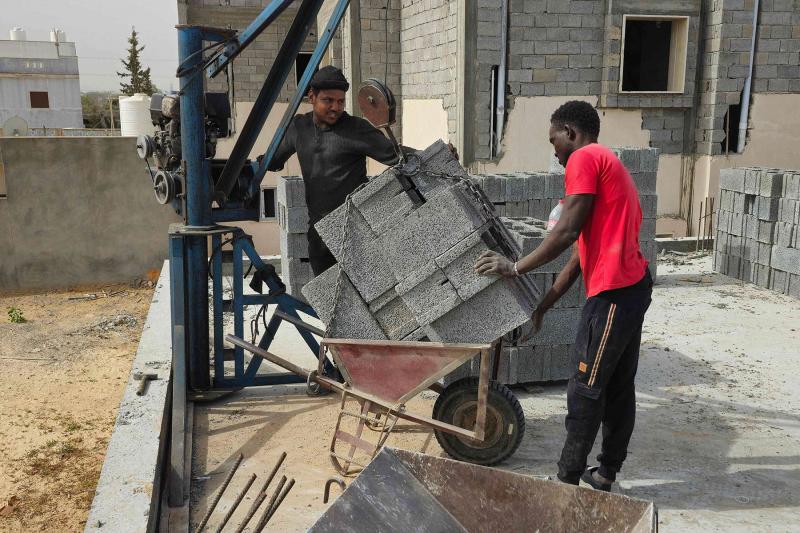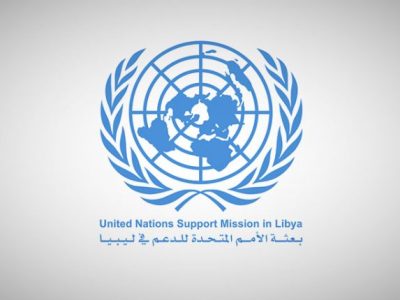Migrant Remittances in Libya: The Hidden Lifeline of the Economy
Foreign workers underpin much of the nation’s private-sector activity. Private businesses, especially in construction, agriculture and informal services, have to rely on migrant labor, which is cheaper and more flexible. Although official data are scarce, the IMF estimates 2–3 million foreign workers reside in Libya, a number comparable to the country’s formal workforce. Many are from sub-Saharan Africa or South Asia. In the absence of local alternatives (the public sector dominates Libyan employment), these migrants supply skills and manual labor that are otherwise unavailable, sustaining sectors that would otherwise stall.
With so many migrants working informally, Libya’s private economy effectively runs on an informal financial base. A large share of these workers remit part of their earnings abroad. According to recent surveys, roughly one-third of migrants in Libya say they have sent remittances home since arriving. These flows are mostly outbound – Libya remains a net source of remittances rather than a recipient. In fact, North African remittance studies show Libya’s outflows dwarf those of its neighbors: World Bank data (pre-2020) recorded roughly $744 million in outward migrant remittances from Libya in 2018 (down from $3.2 billion at its 2013 peak). By contrast, official remittance inflows to Libya have historically been negligible (essentially zero in recent World Bank series). Most transfers are informal: studies find the majority of migrants use hawala and similar networks to send money home.
Migrants cite trust, low cost and anonymity as reasons to prefer hawala, especially given our country’s loose financial regulation and sometimes volatile local currency.

Remittance Flows and Economic Role
Remittances from Libya tend to concentrate in African and Asian migrant-sending regions (e.g. West African states, Egypt, Bangladesh). These outflows deliver crucial support to hundreds of thousands of households abroad – families that often rely on Libya wages to pay for food, housing and schooling. While the funds leave Libya, they indirectly buoy its economy. First, the existence of remittance channels encourages workers to stay and earn in Libya rather than become destitute or deported; this maintains local labor supply in key sectors. Second, migrant spending in Libya (on rent, food, and local services) is only partly sent home, leaving a portion circulating in the Libyan economy. Third, by sustaining the viability of Libya’s informal and private markets (e.g. construction, agriculture, domestic work), these flows help preserve social stability: if remittances were abruptly cut, many migrants would be unable to support families and could either mass-return or fall into destitution. That, in turn, could trigger crises for Libyan businesses and communities dependent on migrant labor.
At a macro level, remittances into and out of Libya have been undercounted and volatile. For example, Libya’s chronic currency duality and informal money channels make official data unreliable. Nonetheless, international estimates clearly show Libya as a unique case: unlike its neighbors (Morocco, Tunisia, Algeria, Egypt) which are remittance recipients, Libya has been predominantly a net sender of remittance flows. This mirrors Libya’s 2010s migration boom: an open-door labor policy in the 2000s led to an immigrant stock as high as 2–2.5 million by 2011. In 2024, IOM’s Displacement Tracking Matrix again counted on the order of 700–760 thousand foreign migrants in Libya (the discrepancy with IMF’s 2–3 million reflects difficulty counting irregular migrants). Each year, a sizable fraction of these workers remit earnings. One IOM report finds that among those who send money home, about half say remittances are their family’s primary income source. As such, even though Libya is technically a net outflow country, these transfers are a lifeline for numerous families tied to the Libyan labor market – and by extension for the economic niches in Libya that employ those migrants.
Regulation, Border Controls, and EU Deals
Recent policy shifts are increasingly straining Libya’s remittance economy. Domestically, the rival Libyan governments (western Tripoli and eastern Tobruk governments) have begun enforcing stricter immigration rules and work permits. For instance, in 2023-24 authorities in both parts of Libya conducted crackdowns on “undocumented” migrants and imposed new ID registration systems. This has driven many migrants into the informal sector or out of the country. Simultaneously, an international squeeze – mainly European – is redirecting migration flows. The EU has bankrolled Libya’s border forces: since 2015 the EU’s Emergency Trust Fund and related programs have funneled hundreds of millions of euros into Libya for “border management” and coast guard operations. In practice this means more naval interceptions, coastal patrols and funding for detention facilities. In 2017 Italy and the EU brokered a new Libya migration pact, and as of 2023 EU officials describe co-financing Libyan forces and agreements akin to Italy-Libya MOUs. The cumulative effect has been a sharp drop in irregular departures and a rerouting of migrants through other North African countries.
These restrictive measures impact remittances indirectly. Fewer migrants in Libya means fewer salaries to remit. Stricter border controls also disrupt informal courier networks: hawaladars who previously moved funds across porous frontiers now face roadblocks and checks. Meanwhile, EU demands have encouraged Libya to tighten currency controls to prevent capital flight, occasionally making even legitimate transfers difficult. For example, Libyan Central Bank policies in 2023-24 (amid exchange-rate reforms) have restricted banking services for migrants, forcing them deeper into unregulated channels. Humanitarian groups warn that in this environment “trapping more and more people” in Libya through externalisation deals simply traps remittance flows too, cutting migrants off from home.
Risks of Disrupting Remittance Channels
Interrupting remittance flows could have destabilizing side-effects for Libya’s economy. On the one hand, fewer remittances could marginally help the dinar by keeping currency inside, but the negative consequences likely outweigh this. Migrant workers would suffer immediate hardship; their families back home would lose vital income, potentially fueling new migration pressures. In the Libyan context, stranded migrants often turn to borrowing, illicit work or smuggling. A breakdown of trusted informal transfer systems (hawala) could push remittances further underground – or eliminate them. The result would be reduced consumption by migrant households (who spend on local goods) and less entrepreneurial activity (many migrants invest a portion of savings in small Libyan businesses). In short, Libya’s informal economy and even some formal sectors (construction firms, small trade enterprises, etc.) rely on the broader ecosystem enabled by remittance flows.
Policymakers should weigh the social value of these channels. International agencies like IOM note that migrants often use hawala not to evade law, but because formal banks are inaccessible. Cracking down on hawaladars risks cutting off a lifeline. As one analyst observes, Libya’s role as a “remittance-sending” economy reflects its unique migrant-dependent model. Preserving at least some legal framework for remittances (for example, regulated foreign exchange providers) could sustain vital income flows. Indeed, if Libya’s transition to peace and economic recovery is to succeed, it will need the cash injections and social links that migrant remittances bring – even if the money technically flows out. In the words of development experts, these flows (often overlooked in macro statistics) represent a “hidden lifeline” for local markets and resilience.




